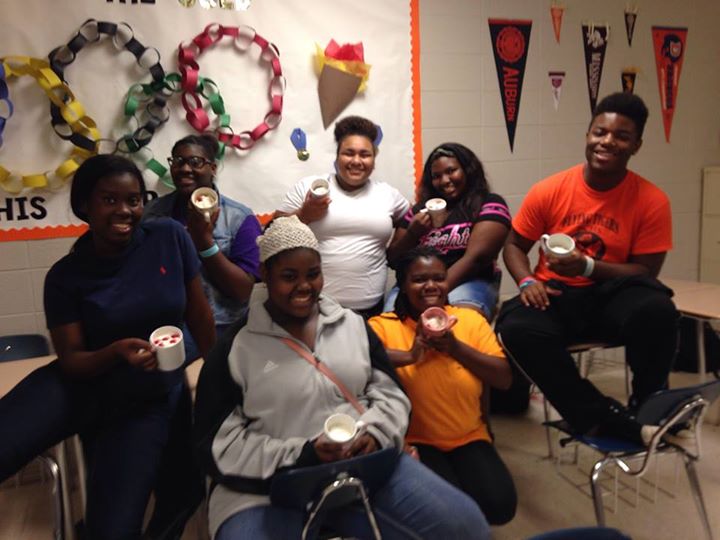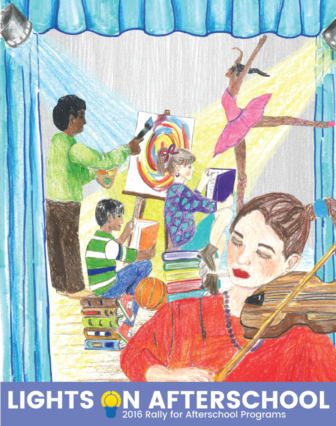
Courtesy of Baldwin County High School
.
As after-school programs across the nation hold events this week to highlight their impact, students in a Bay Minette, Alabama, program will bash in an old car.
The car smash is part of a festival-like fundraiser on the lawn of Baldwin County High School on Friday to observe Lights On After School, a nationwide rally organized by the Afterschool Alliance in support of after-school programs. Thousands of after-school programs are holding events this week, ranging from program tours to science fairs, to bring attention to after-school or out-of-school-time programming for youth.
The festival at Baldwin County High will include inflatable play equipment, a 5k run, a dunking booth and a rock-climbing wall, said Michele Hall, Baldwin County High School’s 21st Century Community Learning Centers program director.
[Related: Out-of-school Programs Address Lack of Art Education in Greece]
People can pay $1 to pick up a sledgehammer and destroy the car — just for fun.
The event supports the after-school program, which offers a rich variety of activities geared to the needs of the kids it serves in rural Baldwin County.
 In fact, three students there created the winning poster in the Afterschool Alliance’s national contest. Maia Austin, 17; Gabby Williams, 17; and Marquez Drinkard, 16, made artwork showing dance teams, music and visual art projects available in the after-school program.
In fact, three students there created the winning poster in the Afterschool Alliance’s national contest. Maia Austin, 17; Gabby Williams, 17; and Marquez Drinkard, 16, made artwork showing dance teams, music and visual art projects available in the after-school program.
Each day at the high school 30 to 50 students attend the program, which includes after-school tutoring and credit recovery courses. They can also take field trips, cooking classes and archery lessons, among other things.
“A lot of the students in our program are not enrolled in other extracurricular activities,” Hall said, partly due to the rural location. Many students live with grandparents or other relatives. Some are at a disadvantage because they don’t have strong family support, she said.
“We create an environment where they can be supported by teachers and adult mentors as well as get their families involved,” she said.
A March 2016 report from the Afterschool Alliance said after-school and summer learning programs provide an important support in rural areas, many of which experience persistent poverty. Sixty percent of the more than 1,000 students at Baldwin High are eligible for free or reduced-price lunches, according to data from the National Center for Education Statistics.
Hall is developing a cooking project with a local caterer that will involve the kids in preparing a meal and then taking it home to their families.
“A lot of the students don’t go home to a sit-down, well-balanced meal,” she said.
The cooking project teaches good nutrition and builds stronger connections between school and home, Hall said.
In addition, a summer program offers college campus visits and tours of job sites, said Cherry Penn, district supervisor of after-school programs and 21st Century Community Learning Centers grants program manager.
“A lot of times the kids need to work,” Penn said. The program shows them a variety of job possibilities.
Some of the students have not been outside Baldwin County, she said.
College visits are aligned with the students’ interests, such as the culinary program at nearby Faulkner State Community College, Penn said.
A large body of evidence shows that after-school programs improve outcomes for students who attend them, according to the Afterschool Alliance. Participants show improved school attendance, better behavior and academic gains, according to the organization.
This week more than 1 million people across the nation are participating in more than 8,000 events observing Lights On Afterschool, according to the Afterschool Alliance.
More related articles:
State Mistake Cuts 21st Century Programs Off at the Knees in Mississippi
Green Dot Moves Kids From Bystander to Preventing Sexual Assault, Bullying and Dating Violence
Longer Summer Programs, Consistent Participation Needed for Learning Gap, New Report Advises





























